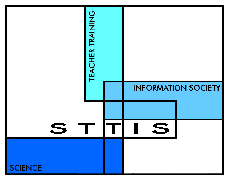Workshop 1
 Contents Contents
|
Section
B Learning about the innovation
Activity
B3 Beyond linear relationships |
|
Aims
-
To learn how spreadsheets
can be used to explore
the behaviour of more complex relationships involving power laws.
-
To consider the usefulness
of these models in teaching
and learning.
Background
In all of the earlier models,
the relationships were
linear. One variable was either directly proportional or inversely
proportional
to another. In other words, if one variable is doubled, the other would
either double (directly proportional) or halve (inversely
proportional).
In these models there are relationships in which one variable is
proportional
to the square of another.
| For this activity you will need
to open two spreadsheet workbooks. Each model is on a different sheet
in
the workbooks. There are notes on each model - point to the first cell
to display the comment. |
Force and motion

Download ‘models3a'
|
Electricity

Download ‘models3b'
|
What to do
1. Model 3a.1 (page
2) shows the behaviour of an object with constant
acceleration, in
which you can change the values of the initial velocity and
acceleration.
Velocity-time and distance-time graphs are displayed. For each change
below,
predict what would happen to the shape of each graph and then try out
you
predictions by changing the values on the spreadsheet:
-
Increase acceleration to 2
m s-2 (on the
spreadsheet this is written as m/s/s because it is not possible to use
superscripts within a cell on a spreadsheet).
-
Increase acceleration to 3
m s-2.
-
Change initial velocity to
10 m s-1 with
an acceleration of 1 m s-2.
-
Keep initial velocity as
10 m s-1, and
change acceleration to zero.
2. On Model 3a.2 (page
2), the scales of the axes adjust automatically in order to
plot the
range of calculated values. The disadvantage of this is that it is not
easy to compare the relative sizes of the vales, but it does mean that
you can explore a wider range of values, including negative values
Starting with an
initial velocity of 10 m s-1,
predict what you think will happen with a negative acceleration. Try
out
values of -1, -2, -3 m s-2.
3. Models
3b.1 (page
3) and 3b.2 (page 4)
are concerned with
the power output of series circuits containing one and two lamps
respectively.
For Model 3b.1, what effect do you think changing V would have on the
power
output? What effect would changing R have? For Model 3b.2, what is the
effect of changing one of the resistances on the total power output and
the output of each lamp?
4. Do you
think that these models are useful
in the classroom? What age pupils do you think that they are suitable
for?
How would you integrate these activities into your existing teaching?
Can
you think of any improvements that you would like to make to these
models?
5. Do you
think it would be useful for pupils
to construct these kinds of model? Would it be useful for them to copy
a model that had already been constructed? Or would you expect them to
be able to contribute to the design of the model themselves?
|

 Teaching with computer models
Teaching with computer models

